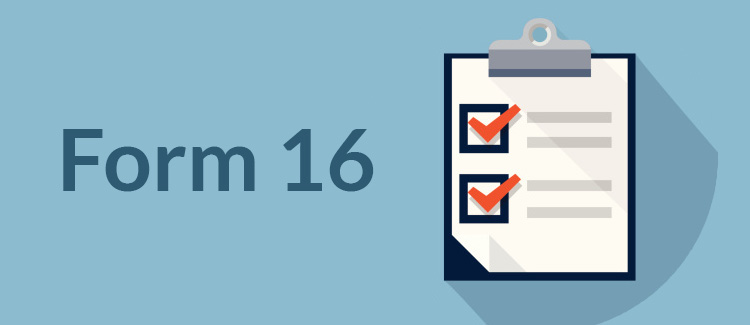Form 16 is a Tax Deduction at Source (TDS) certificate given by your employer, under section 203 of the Income Tax Act. The form declares the salary you received in the financial year along with the tax cut at the source. According to the present rules, if your salary exceeds the limit of Rs.2,50,000, your employer is supposed to deduct tax. In case you have not received this certificate from your employer, you may use the worksheet provided in the income tax department website to calculate and declare your amount which comes under the taxable limit. However, it is advised to collect the form from your employer.
What is Included Inside Form 16?
The certificate of Form 16 contains details of the salary you have earned during the financial year and the TDS deducted from it. It contains two parts, part A and part B. Form 16A furnishes information about the employer and employee, employment period and the TDS deducted. It includes information of name and address of employer, PAN of an employee, PAN and TAN of employer along with a summary of taxes deducted.
While Form 16 furnishes salary income certificate, Form 16A gives details on TDS other than salary income. For instance, this form will be issued to the individual in case there is tax deducted from a fixed deposit income or TDS on insurance, and so on. That is, TDS deducted from any other source other than income is shown under form 16A.
On the other hand, form 16B provides most details you need to file your IT return. It details the salary paid, other incomes if any, deductions allowed and tax payable. It shows the detailed computation of income showing salary earned and various deductions made. Deductions under 80C, 80CCC, and 80CCD include contributions towards provident fund, life insurance policies and pensions. Deductions under 80D include health insurance premium, interest on education loan and others. Once these deductions are made from gross income, taxable income is arrived at and tax is calculated based on the slab.
Form 16 is generally issued by your employer annually around or after the financial year. It’s important to note that in case you change your job in between the financial year, both the employers are required to issue separate Form 16A for the period of employment under them.
How does one use Form 16?
It is very important to understand the benefits of Form 16. In case of any error, you should immediately ask your employer to rectify it. One should note that Form 16 only has TDS from salary. In case of any income from other sources such as fixed deposit from a bank, one should get it in Form 16A from the source (bank). With the given certificates in your hand, you can go ahead and file your income tax returns.
How to E-File the Tax Returns?
If your tax limit exceeds Rs.2 lakh annually, one has to file tax returns. One does not always need professional help to file ITR. If you have income from salary and interest income from fixed deposits or income from house property, filing ITR is simple. But in case if you have income from other sources such as your own business, you may want to seek professional help to avoid errors. You can e-file your ITR by logging in to www.incometaxindiaefiling.gov.in. You will need to furnish your PAN and bank account details while filing. In case there can be a refund, you can opt for direct deposit into your bank account.












